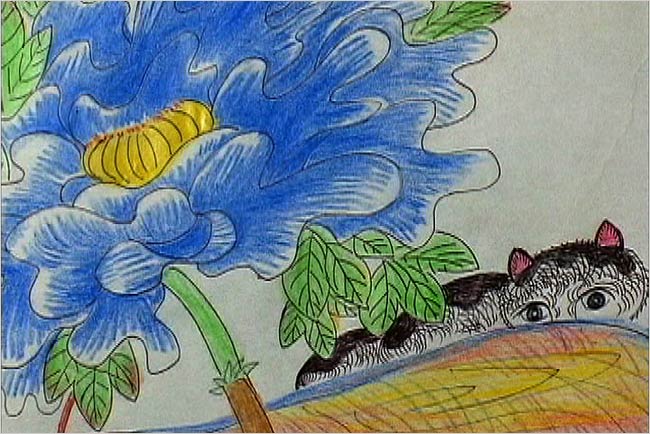

Reviews of Recent Independent, Foreign, & Documentary Films in Theaters and DVD/Home Video
Directed by: Linda Hattendorf. Produced by: Hattendorf & Masa Yoshikawa. Director of Photography: Hattendorf & Yoshikawa. Edited by: Keiko Deguchi & Hattendorf. Music by: Joel Goodman. Languages: English & Japanese with English subtitles. Released by: Lucid Dreaming. Country of Origin: USA. 74 min. Not Rated. As hinted at in the film's title, artist Jimmy Mirikitani is seemingly haunted by felines or, more specifically, by the image of a boy in a Japanese internment camp during World War II who loved the animals and asked Japanese-American Mirikitani, also interned in the camp, to draw them for him. Remarkably, over a half century later, Mirikitani, calling himself the “Grand Master Artist,” continues to sketch the figures, now homeless on the streets of New York City, an octogenarian nursing his resentment toward the country that imprisoned him following the 1941 attack on Pearl Harbor. The title may refer not just to his art, but to the constancy of Mirikitani’s grudge and the havoc it wrought on his psyche – and those of thousands of others. Yet, similar to a cat’s storied resiliency, his anger has fueled his survival and inspired his work. Director Linda Hattendorf would often see Mirikitani painting and selling his work on a SoHo corner near her home. After the 9/11 attacks and the resulting polluted air quality, she invites Mirikitani into her apartment. He’s readily makes himself at home, turning a corner into his art studio, with Hattendorf’s cat keeping him company. Shot on digital video in 2001 and 2002, Hattendorf makes discreet appearances as she cuts through the red tape so he can obtain his social security benefits. With its evocatively nostalgic music, empathic voice-over narration by Hattendorf, and its understatedly stylized cinematography, the documentary beautifully renders the sense of its subject as a reminding voice of conscience. In the opening sequence, pedestrians around Mirikitani are blurred, visually reinforcing the notion of Mirikitani as stubbornly ever-present while life whizzes past him. And Mirikitani delivers one passionate and indignant diatribe after another condemning the senselessness of war, whether discussing his experience or others, like the fate of his sister, from whom he was separated when she was sent to a different internment camp. His first phone conversation with his sister in decades emblematizes the poignancy that suffuses the film.
At the end, Mirikitani travels to where he was interned in Tule Lake, CA, with other former internees, and one gets the impression that – through the
kindness shown him by Hattendorf and others – one man’s faith has been restored, despite all evidence to the contrary, in humanity itself.
Reymond Levy
|